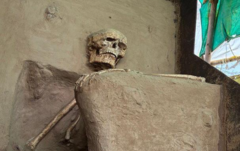In a creative yet controversial move, a small French town's cathedral has turned to curing ham as a way to fund restorations for its antique organ, but this has sparked a clash with regulatory bodies and raised questions about the future of France's religious heritage.
Hams and Heritage: The Struggle of a French Cathedral's Restoration

Hams and Heritage: The Struggle of a French Cathedral's Restoration
Creative fundraising at a French cathedral highlights the challenges of preserving religious heritage amid financial struggles.
Struggling to finance the restoration of its historic organ, St.-Flour's priest devised an innovative method: converting the north tower of the cathedral into a drying space for hams. Blessed by a local bishop, the initiative became a source of revenue for nearly two years, attracting the attention of charcuterie enthusiasts and allowing for much-needed repairs.
However, the project faced a setback when an inspector from France's architectural heritage oversight discovered grease stains and cited fire hazards caused by the hanging hams. Despite the cathedral's refusal to dismantle the setup, the issue escalated to the French Minister of Culture, Rachida Dati, illustrating the clash between local ingenuity and bureaucratic regulation.
This situation not only spotlights the struggles faced by aging churches across France but also raises broader questions about funding and maintaining the country's vast religious heritage. Ever since the French Revolution, when church properties transitioned to state control, local and national governments have grappled with the financial responsibility of preserving these historical sites.
However, the project faced a setback when an inspector from France's architectural heritage oversight discovered grease stains and cited fire hazards caused by the hanging hams. Despite the cathedral's refusal to dismantle the setup, the issue escalated to the French Minister of Culture, Rachida Dati, illustrating the clash between local ingenuity and bureaucratic regulation.
This situation not only spotlights the struggles faced by aging churches across France but also raises broader questions about funding and maintaining the country's vast religious heritage. Ever since the French Revolution, when church properties transitioned to state control, local and national governments have grappled with the financial responsibility of preserving these historical sites.





















